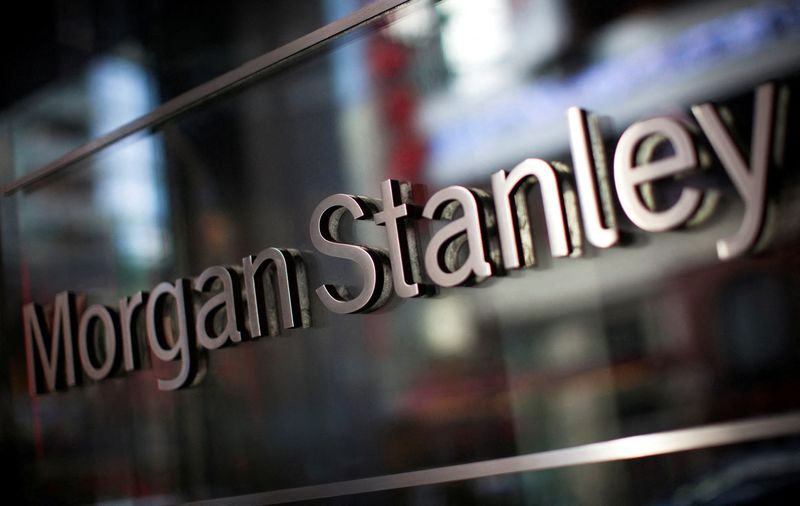
© Reuters. FILE PHOTO: The corporate logo of financial firm Morgan Stanley is pictured on the company’s world headquarters in the Manhattan borough of New York City, January 20, 2015. REUTERS/Mike Segar/File Photo
2/2
(Reuters) – U.S. banking giants are scheduled to report second-quarter results starting this week as the industry tries to move past the turmoil caused by the crisis in regional lenders earlier this year.
An S&P index of U.S. bank stocks has fallen more than 9% this year as investors fret about the effect of high interest rates and a looming downturn.
Here are five trends to watch this season: * COMMERCIAL REAL ESTATE (CRE)
Investors will scrutinize disclosures on banks’ CRE exposure, particularly on office loans. CRE has come under pressure from rising interest rates and the proliferation of remote working that emptied out many office buildings.
Big U.S. banks’ CRE portfolios put in a surprisingly good performance during the Federal Reserve’s annual health checks, with losses declining slightly versus last year, the central bank said last month.
But regional banks have had to cut their exposure to the beleaguered sector by tightening standards and reducing the number of loans. * DEPOSIT TRENDS
Deposit costs have been at the forefront of Wall Street’s attention after bank runs in March highlighted customers’ ability to pull their deposits quickly from banks in search of safety or higher-yielding alternatives.
To lure customers, banks will face pressure to pay higher rates on deposits, which would erode their profits, analysts have said.
Investors will also look at deposits to gauge the industry’s stability after the turbulence in March. * INVESTMENT BANKING FEES
Investment banking fees from mergers and acquisitions (M&A) and underwriting stock offerings will offer a deeper insight into any nascent recovery in dealmaking.
An upbeat stock market has triggered several initial public offerings, but activity is still subdued compared with the pandemic boom. * NET INTEREST INCOME (NII)
Investors will also focus on net interest income, a closely watched measure of how much money banks make from lending.
A contraction in NII could spell the end of a boom for lenders that have reaped the benefits of the Federal Reserve’s interest-rate increases since last year. And NII forecasts will be key to understanding banks’ outlook for future profits. * HEADCOUNT
Wall Street giants including Morgan Stanley (NYSE:) and Goldman Sachs (NYSE:) have laid off staff to keep a tight lid on expenses as economic uncertainty weighs on their trading and advisory businesses.
Market participants will be watching to see if executives give more commentary on staffing in the sluggish environment.





